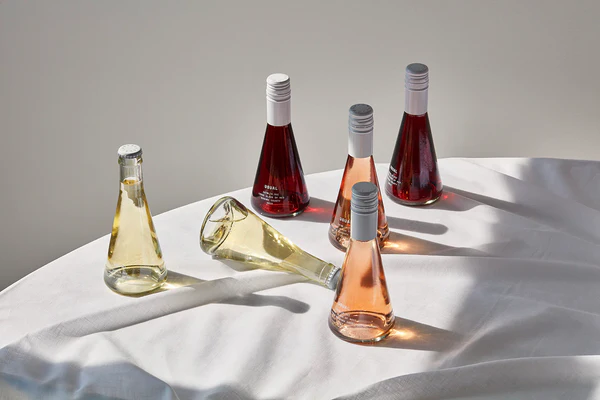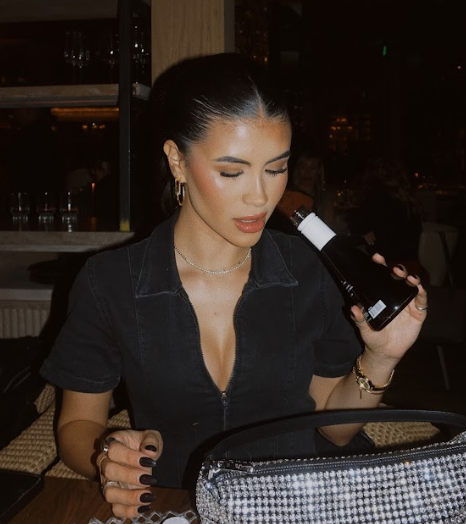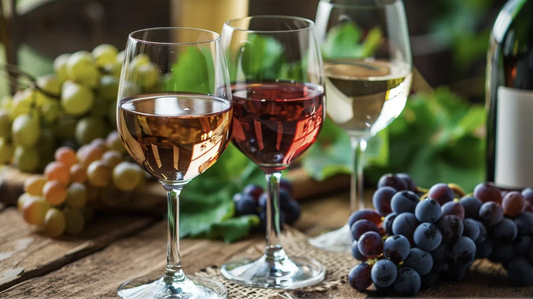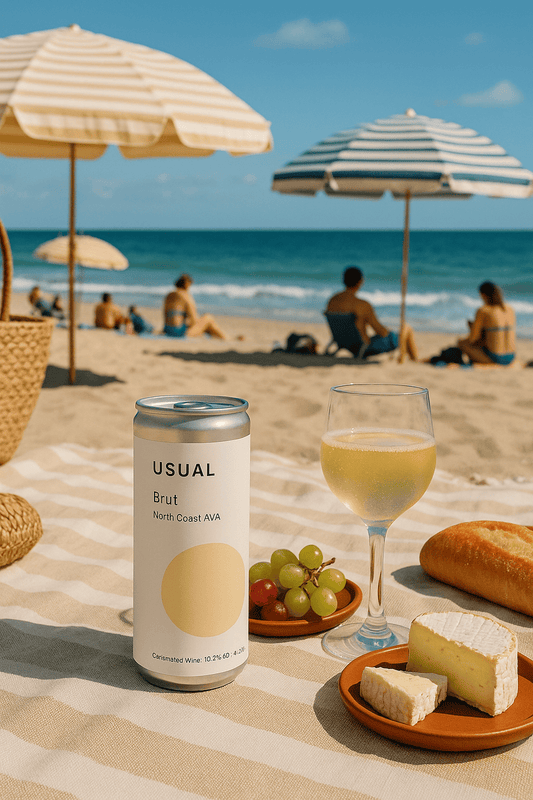
Wine Flight Ideas for Every Palate (and How to Host One at Home)
Matt CoenenThere’s something undeniably fun about a wine flight. It’s part tasting, part discovery and the best kind of excuse to open more than one bottle at a time. Whether you’re hosting a few friends, planning a cozy night in or just curious to explore new wines, flights make it easy to sample and compare different styles without any pressure to commit to a full glass.
Unlike a full-blown dinner party or a formal tasting, a wine flight feels low-key and creative. You get to curate every part of the experience, including choosing a theme, pairing a few snacks and even printing out a tasting sheet. (Of course, you can also keep it casual with sticky notes.) Best of all, it’s totally customizable. Bold reds, unexpected whites, a globe-spanning tour in a single evening — the options are endless.
What Is a Wine Flight?
A wine flight is a curated tasting of several small wine pours, usually grouped around a theme, such as region, varietal or style. Think of it as a sampler platter, but for wine. Instead of committing to one bottle, you get to explore how different wines compare side by side: how a Pinot Noir from California stacks up against one from Burgundy, for example, or how sparkling wines differ in sweetness and texture.
Flights are popular in tasting rooms and wine bars, but they’re just as easy (and often more fun) to set up at home. With a little planning and the right wines, you can create a tasting experience that’s educational, social and full of discovery — no formal wine knowledge required.
How to Host a Wine Flight at Home
Creating a wine flight setup at home doesn’t take much, just a few key tips to help things go smoothly (and taste even better).
-
Start with 3 to 5 wines. That’s the sweet spot for comparison without overwhelming your palate. Keep pours small, about 2 to 3 ounces each, so you can enjoy the full flight without feeling over-indulged. If you’re using full-sized bottles, it’s a bit of a commitment, which is why single-serve bottles (like ours here at Usual) are such a great choice. You open what you need, nothing goes to waste and each pour is fresh.
-
Use separate glasses if you can. But don’t stress if you can’t — just give each one a quick rinse between wines. Label glasses or set them out in tasting order to keep things organized.
-
Add snacks. Keep it simple with crackers or bread as palate cleansers, or offer a few intentional bites like cheeses, olives and fruit that play well with your wine selection.
-
Make it interactive. A tasting sheet or casual scorecard can go a long way in getting people talking about what they taste — and realizing how different each wine really is. Even if it’s just you, jotting down quick notes can help you learn what styles and regions you enjoy most.
Most importantly? Don’t overthink it. A home wine flight should feel inviting, not intimidating. You don’t need a sommelier certification to enjoy great wine, just curiosity and a couple of clean glasses.
Wine Flight Ideas for Every Palate
Choosing a theme for your flight keeps things cohesive and adds a fun layer of intention to your tasting. Here are a few tried-and-true favorites to spark inspiration, whether you're building around what’s already in your kitchen or ordering with a plan in mind.
Old World vs. New World
Compare traditional wine regions like France and Italy (Old World) with modern producers like California, Australia or Chile (New World).
-
Try this: Sauvignon Blanc from the Loire Valley vs. one from Napa; or a French Pinot Noir vs. Oregon Pinot Noir.
-
What to look for: Old World wines tend to be earthier and more restrained; New World wines are often fruit-forward and bold.
Bold Reds Around the Globe
For fans of deep, rich reds, this flight showcases powerhouse varietals from different countries.
-
Try this: Argentinian Malbec, Spanish Tempranillo and a Napa Valley Cabernet Sauvignon.
-
What to look for: Tannin levels, spice, structure and how the fruit expresses differently depending on the region.
Summer Sippers
Light, crisp wines perfect for warm evenings and patio hangouts.
-
Try this: Dry rosé, Grüner Veltliner and Sparkling Brut.
-
What to look for: Bright acidity, floral or citrus notes, and that refreshing “ahh” factor.
Unexpected Whites
Move beyond Chardonnay and explore aromatic or funky whites that don’t get as much love (but should).
-
Try this: Albariño, Viognier and an Orange Wine.
-
What to look for: Texture, florals, salinity or subtle bitterness — this one’s for the curious palate.
The Usual Wines Tasting Experience
A no-fuss introduction to wine flights using our Mixed Pack, which includes Red, Rosé and Brut.
-
Try this: Taste in order from lightest to boldest (Brut → Rosé → Red).
-
What to look for: Balance, clarity of flavor and how well each wine pairs with your snacks.
As a bonus, compare your tasting notes with ours:
-
Brut: a dry and effervescent sparkling wine with notes of lemon, elderflower and bergamot. From North Coast AVA.
-
Rosé: a crisp and easy-drinking rosé with notes of red peach, wisteria and watermelon rind. From San Luis Obispo County.
-
Red: a bright and fruity red blend with notes of muddled raspberry, black cherry and fennel. From Mendocino County.
Tips for Tasting Like a Pro (Without Taking It Too Seriously)
Tasting wine isn’t about impressing anyone — it’s about paying attention and having fun while you do it. A few simple techniques can help you get more out of each sip without turning the evening into a lecture.
-
Smell first. Swirl the wine gently in the glass to release the aromas, then take a deep inhale. Try to name what you smell — fruit, herbs, spices, earth. There’s no wrong answer.
-
Sip slowly. Take a small sip and let it linger. Notice the texture, the way the flavors unfold and how the wine finishes. Does it make your mouth water? Is it silky or grippy?
-
Taste in order. Move from light to bold so delicate wines don’t get overshadowed. Sparkling → white → rosé → red is a good general flow.
-
Take notes. Jot down what you liked or didn’t. Even one-word reactions (“juicy,” “dry,” “peachy,” “meh”) help build your wine vocabulary over time.
-
Compare thoughts. If you’re tasting with others, chat about your impressions. One person’s “red berries” might be another’s “fruit punch” — and both are right.
Create a Wine Flight With Usual Wines
At Usual, we believe wine tasting should be simple, social and surprisingly fun — no wasted bottles and definitely no compromises on quality. That’s exactly why we created our Mixed Pack. It comes with single-serve bottles of Red, Rosé and Brut, so you can open just what you need for your flight without worrying about leftovers or oxidation.
Each wine is made with minimal intervention and no added sugars, using grapes from sustainable California vineyards. Whether you’re hosting a casual tasting with friends or flying solo for a night of self-care and snacks, our Mixed Pack is a ready-made wine flight that’s easy to enjoy and even easier to love. Just chill, pour and let the tasting begin.
Frequently Asked Questions
1. How many wines should be included in a wine flight?
A typical wine flight includes 3 to 5 wines. This gives you enough variety to compare styles without overwhelming your palate.
2. What’s in Usual Wines’ Mixed Pack?
Our Mixed Pack includes either 4 or 8 single-serve bottles each of our Red, Rosé and Brut (in other words, 12 or 24 total bottles). It’s perfect for building a well-rounded wine flight at home.
3. Do I need special glassware to host a wine flight?
Not at all. While having a separate glass for each wine is ideal, rinsing between pours works just fine. Labeling glasses or using notecards helps keep things organized.
4. Why are Usual Wines a good choice for tastings?
Because each wine comes in its own mini bottle, you can open multiple styles at once without waste — and every pour is fresh, properly portioned and ready to sip.








